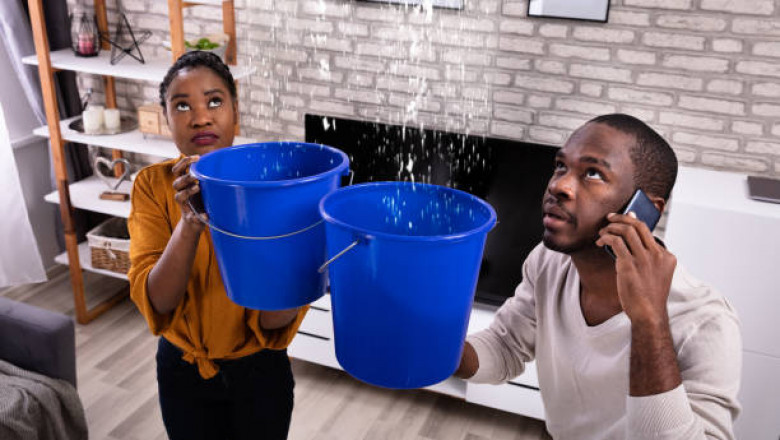views

Water damage to any part of your house can be a huge nightmare, mainly because of the water damage repair that's required afterward. It doesn’t matter whether you are dealing with leaking appliances, broken pipes, or major issues like flooded basements and sewer backups; you need to address the damage immediately.
Here are seven steps you can take after water damage to your home to mitigate the situation.
1. Identify the Source of the Leak
Once water damage occurs, your top priority is to identify and stop the leak. Most of the damage could be caused by corroded or broken pipes with leaks, a leaky roof, a construction defect, or an appliance malfunction.
Identifying the source of the leak helps prevent the issue from becoming major. Also, once damage from leaky pipes starts, your home’s structure and personal belongings are vulnerable to irreparable damage.
It also puts you and your loved ones at risk of health and environmental hazards like mold. Once the leak’s location has been identified, take photographs. The photos you take will help you monitor the extent of water damage.
2. Immediately Call Your Insurance Company
After identifying the leak’s location, the next step should be to contact your homeowners’ insurance company. Your representative or agent will then brief you on your cover. Homeowners’ insurance policies vary depending on the type of policy you acquire.
Once your agent has discussed everything there is to know about your policy; your insurance company will send an adjuster to assess the water damage. They can then determine if your loss can be covered with their assessment.
Also, the photos you take will be pretty valuable in helping the adjuster assess the damage to your home before and after the cleanup.
3. Protect Yourself, Your Family, and Possessions
Once the insurance company adjuster has everything they need to help them identify the level of damage to your home, the next step is protecting yourself, your family, and your possessions. You can do so by:
Turning Off the Power: Electricity and water don’t mix, which is why it’s essential to turn off the power, especially if most of the area around the house is covered in water. It is never advisable to reenter a water-damaged home before turning off the electricity, no matter the situation.
Protect Your Valuables: For items that haven’t been affected by water damage, like wood furniture, you can place an aluminum foil underneath them to prevent staining. Also, remove your area rugs from the wet floor.
Wear Protective Gear: Wear protective clothing like gloves or rubber boots to protect yourself from cuts and injuries that might get infected by bacteria present in the water.
Don’t Touch any Visible Mold: Never disturb any mold you see on the wall, as this will cause the mold spores to spread into the air.
4. Repair the Water Damage
Your cleanup process should start within the first 24 to 48 hours since water damage occurs. This will help ensure that mold proliferation doesn’t occur. Also, it will help you assess if the damage is too much to handle on your own.
If it is, you can contact an expert to come and help you repair and restore your home.
5. Remove the Humidity
If the water damage isn’t too extensive and you decide to start the drying process yourself, ensure that you wear protective gear. Start by determining what needs to be kept and what needs to be thrown away.
Once everything is sorted, you can start removing the stagnant water with plastic tubs or buckets. Then go in with a mop to absorb the excess water, especially in hard-to-reach areas. You can also hire a wet-dry vacuum to help you eradicate the humidity.
6. Check for Mold
It only takes 24 hours for mold to develop after water damage occurs. This means that the quicker you start the drying process, the fewer chances mold has to grow. But, if the mold gets bad, you may have to get rid of the affected areas completely.
However, don’t do it on your own. It would be best to get a professional to help you get rid of the mold. They will also ensure that the mold doesn’t reoccur.
7. Start the Restoration Process
Now that you’ve finally removed the moisture and gotten rid of any mold, the last step is restoration. And while this may take some time, it will undoubtedly give your home a new lease of life.
So, if your home ever experiences water damage, the seven steps above will make it easy to make your home look incredible again.












